REMINISCING
A long, long time ago I went to the YMCA or was it the YWCA here in Australia. I know “YMCA” was a song sung by the Village People. Anyhow, as a younger person I went to younger person’s crafts classes and to something or other at which we visited some wonderful places and did some great things.
For example, we visited a Soft Drink Manufacturer’s place on one occasion and some of us were given a bottle of carbonated drink. As we sat by the roadside on the kerb waiting for one of our brothers to pick us up, a bottle, that one of my sisters had placed by the kerb, suddenly exploded. Luckily, nobody was hurt, but as you can imagine, we kids weren’t too pleased at losing that drink and our parents were none too pleased with that Soft drink manufacturer.
Barry Benson – Honey Bee Extraordinaire
- Kingdom: Animalia
- Phylum: Arthropoda
- Class: Insecta
- Order: Hymenoptera
- Family: Apiidae
- Genus: Apis
- Species: Apis mellifera
Another time some of my sisters and I were somewhere or the other with a large group of young people in a big room, and some facilitator or adult announced something was free, so there was a rush toward it, though I can’t remember at all what it was.
Anyhow, I got knocked over in a stampede and was very much surprised as I lay there on the floor-boards with my hands over my face trying to fend off shoes of which feet were in those shoes treading on me. Luckily, one of my sisters saw what was happening, with horror, and did a sterling job. She waded through the crowd, shouting “Stop it, my sister is down there, get off”. Boy, was I grateful for that sister pulling people off me and helping me to my feet? Yes, I was!
Those were the days, and do you know what? The “old days” for me, meaning 30 to 35 years ago were filled with adventure and fun and challenge. Youngsters did not just stay indoors staring at a computer, playing games, or using a Console, or stay inside all day watching televsion. We played out on the road and walked a lot just for fun and to get to the shops.
I named the Shops according to how far away they were – the First Shops were a beautiful group of shops closest to us, within comfortable walking distance (and by this I mean it took a good half hour walk one way, not just 5 minutes down the road, which is all that people nowadays seem willing to walk), consisting of Mathesons supermarket, a wonderful Deli and a few other nondescript shops which I did not need to attend. At the deli we would buy Myrtle the Turtle candies and Rain-blo-Pops for hardly nothing, and Pop-up Books, which were a big hit with us kids, keeping us entertained for hours at home.
The Second Shops were far far away and could only be arrived at by car. Sometimes one of my brothers would drive out there to buy Fish and Chips, which would be a wonderful adventure for me if I went with them. The Third Shops were even further away and just down the road from where I went to Primary School.
Interestingly enough, the further away the Shops were, the less “quaint” and the more busier and less personal they seemed to be to me, as one moved closer to the City. At the Third Shops there was also a Fish and Chip shop, and sometimes a school child’s parents would write out a Note giving the school permission to release their child so she/he could walk down the road to the Third Shops, to buy a package of Fish and Chips for lunch.
Of course, that child then became everyone’s best friend back in the school play-ground, as everyone loved fish and chips.
At High School in Art classes, we did some neat stuff, like gluing pasta onto bottles and then spraying the whole thing with gold paint. I really loved lino cutting and printing, with wonderful chisel shaped tools and other tools to gouge out a picture in reverse, and then the grooves were filled in with ink and a piece of paper smoothed over to ink it.
We even learned basic photography and developing pictures in a “dark room”. The lessons included “photograms” or putting random objects, like keys, on a senistized piece of paper and developing a negative image directly by exposing the photo sensitve paper to light. I loved doing Photograms.
We also looked at candle making and although I couldn’t get the hang of it, I was part of a YWCA group (or something like that) that learned how to make candles. In fact, from memory, I was successful in making at least one Candle, much to my surprise. However, I was content to leave the bulk of the Candle making to interested others (as I deigned to conserve my energy, rather than expend too much of it).
CANDLE MAKING
Recently, I found a nicely written article at home on how to make a WHIPPED WAX CANDLE, written by hand by my twin sister. She has very neat printing, whereas mine is not so neat and small and so is not so decipherable.
I really don’t know where the original instructions for the candle making came from, but in the “old days” we loved to copy out information of all kinds from various Library books and other sources, and my sister also copied pictures by hand, from various sources, which she was (and is) quite good at. Here below are instructions for a “Whipped Wax Candle”.
As it was written on foolscap paper and my Scanner cannot reduce foolscap size information, I managed to scan the actual steps, but the Heading ( which is of course “Whipped Wax Candle” ) is missing from the scan. Also, at the very bottom it says “Useful for checking when making the” and then abruptly ends. That is because the next line wouldn’t fit into the Scan. However, I can tell you that the remaining words are, “sand candle”.
What is Whipped Wax anyway?
Basically whipped wax is wax that has had air incorporated into it by whipping it as it cools.
The Link below takes you to an interesting article on how to make whipped wax.
http://www.onestopcandle.com/candle/whippedwaxinst.php
Now, below is a great link on Rolled Beeswax Candle Making. Beeswax Candles are gorgeous to look at, and are easy to make.
http://www.candlehelp.com/?content=rolledbees
Beeswax is an all natural substance made by bees in contrast to paraffin, a chemical byproduct of the oil industry. Beeswax candles emit a brighter, longer burning flame. Beeswax is obtained by processing and purifying the crude wax of the honeybee and is used in making candles, crayons, and polishes.
Beeswax is a substance secreted by worker honeybees from four pairs of glands on the underside of their abdomens, and it is used for the construction of the honeycomb.
Young worker bees secrete droplets of wax called “scales”. One pound of beeswax consists of approximately 800,000 scales. Bees must consume 8 to 10 pounds of food stores to produce one pound of beeswax.
Beeswax is a solid, yellowish, nonglycerine substance allied to fats and oils, secreted by bees in constructing their honeycomb. A honeycomb is a mass of hexagonal wax cells built by honey bees in their nests to contain their larvae and stores of honey and pollen.
Fresh, new honeycomb is sometimes sold and used intact as comb honey (honey in its natural comb), especially if the honey is being spread on bread rather than used in cooking or as a sweetener. Chunk Honey, as its name implies, is a chunk of comb honey together with liquid honey in a container. Creamed honey, also known as whipped honey, honey butter, or spun honey, is a type of crystallized honey that has been processed using temperature controlled methods to bring about the creamy texture of the product.
Beeswax candles last up to three times longer than paraffin wax candles and twice as long as soy candles of the same size. Soy wax candles are made from the processed oil of soybeans, so they are made from a vegetable wax (which is called Soy Wax). Soy wax is a renewable resource. Soy wax candles burn slower and not as hot as paraffin wax candles .Soy wax candles burn up to 30 to 50 percent longer than paraffin wax candles.
http://www.theredheadriter.com/2012/03/the-truth-about-paraffin-wax-candles-are-they-toxic/
Paraffin wax candles produce soot and may have wicks made from lead. Soy or beeswax candles are safer alternatives to use than paraffin wax candles.
BEES & HONEY
Honeycomb is like the “furniture” in the bees home, used by bees to keep their honey. Beekeepers may remove the entire honeycomb to harvest honey. The honey is removed from the comb by uncapping the honeycomb cells, and extracting the liquid honey using a centrifugal machine.
The Hexagonal structure of the honeycomb uses the least material to create a lattice of cells with a given volume, and is thus a very efficient use of resources.
Nowadays apiarists (beekeppers) maintain hives, built around the concept of bee space that Langstroth observed in nature, which hold removable frames of honeycomb. Using removable frames and a honey extractor, the beekeeper can harvest honey and save the honeycomb for reuse by the bees in the following year. There are “top bar hives” which allow Honeybees to “draw their own comb” or to create their own Honeycomb from scratch, rather than to fill in the template provided for them with a Langstroth Frame. See THIS post for information.
Beekeeping or Apiculture is the controlled rearing of bees in beehives for gathering honey. The culture of beekeeping is very old. An Apiary is where Bees are kept, and an Apiarist is someone that keeps Bees.
Honey is one of the oldest sweeteners used by man. Ancient Egyptians valued it highly for its medicinal and healing properties. Honey is made when honeybees collect the nectar and sweet deposits from plants, then modify the deposits and store them in a honeycomb as honey.
Click HERE to find out what “Bee Bread” is and how Bees use nectar and pollen.
Did you know that the Bees you see flying around looking for nectar and pollen are all Female?
Did you know that Royal Jelly is a substance of complex chemical structure secreted from glands on the tops of the heads of young nurse bees, as food for the larvae? When it is time for a new “Queen Bee”, the Worker Bees select some of the Larvae to feed them large amounts of Royal Jelly, and eventually one of these larvae develops into the “Queen”. Only the “Queen Bee” is able to reproduce, for which she needs the male Drone Bees, whose only function is to mate with the Queen Bee.
Bees store their honey. They use it as their food for times when there are no flowers blooming. There is a wide selection of colors and flavors of honey. The nectar from different flowers tastes different. Another factor causing the taste and smell variation in honey is the soil chemistry of the plant that the nectar came from. This tends to influence the looks of the honey too.
If, like me, you love the movie “Bee Story” where the bees want to stop humans from taking their honey, my thoughts are that as long as you are keeping bees for their sustainability first, and you maintain the colony so that the bees produce extra honey, it is okay with me to take some of the honey, after leaving some for the bees, that after all worked hard to produce the honey in the first place.
There is good information at How Stuff Works about Bee Anatomy and the Life Cycle of Honeybees.
If you are interested in home beekeeping, please click on the Link below to the “Mother Earth” website, to see how to keep bees naturally.
In Australia , Malfroys Gold has retail stores of ethical Honey in the Eastern States ( but not in Western Australia where I live ), and a Mail order Catalogue, with a minimum order required.
Malfroys Gold doesn’t use artifical “frames” as the foundation for the beeswax, but lets the Bees produce natural Honeycomb. Malfroys Gold take some of the natural Honeycomb to derive honey from, while leaving enough honey for the Bees themselves.
http://www.malfroysgold.com.au/wildhoney.html
The “Beekeeping in Western Australia” website has links to sources of natural honey, including “Bartholomews Meadery” and I might just get a 350g jar of “Ginger in Honey” from them!
I have actually been to the field operations of the Bees Neez apiary when they had an “Open Day”. They sell their natural honey and other products at several retail outlets in Western Australia.
BEESWAX
If you want to see how a hobbyist Beekeeper keeps beehives treatment free, and how she extracted the wax from the honeycomb of her Bee Hive, please click on the link below to go to the Blog of “Beverly Bees’.
http://www.beverlybees.com/cutting-comb-is-a-sticky-gooey-mess/
Bevery Bees ( link above ) is run by Anita in Boston, Massachusetts, and Anita lets the bees eat their honey first. This means honey is sold only after the bees have enough to eat for themselves. The honey she sells is truly excess honey. Have a look at Anita’s wonderful home-made honey at the page below. You can only buy it if you are local, as it is only produced in small supplies, due to the fact that Anita’s focus is to help sustain Bees. Anita’s site will give you lots of interesting and helpful information about backyard Bee-keeping.
Regarding BEESWAX for your Candle Making, Glenn and Becky of Ohio have Beeswax for sale in the U.S.A. if you would like to contact them. You can buy raw honey from them too!
In other countries, just “google” or look up “Natural Beeswax” for beeswax supplies. Click on the link below for information about honey production in Australia.
http://www.heathmonthoney.com.au/ProducingHoney/ProducingHoney-pg1.htm
Here are some other Links on extracting Beeswax.
http://www.beesfordevelopment.org/portal/topic.php?id=146&p=29
According to the Food and Agriculture Organisation, empty combs, brood combs, and combs containing both brood and honey or uncapped honey should all be returned to the hive. Only full combs of ripe honey should be taken. See THIS Link here please for more FAO information. It is fascinating to me to think of the amazing way that Bees live and help Flowers through pollination.
I had to add this Picture above, as I love the “circle of Life” and it is great to know that the Bees make the Honeycomb of Wax and Nectar/Pollen mix, and the Honey for themselves in the first instance ( not for Humans primarily ). They certainly are “busy bees’, and this Diagram above from “How Stuff Works” shows you what the FAO means about “brood comb” which is of course Honeycomb with the Bee’s “brood” or young in them. I believe it is a good idea to know how we humans get the stuff that we have, or know how things work or what the Source of things are. That way, we can really appreciate what this wonderful and bountiful Earth has to offer ALL of us.
I respect ALL animals, as my other Blog – FASCINATING ANIMALS – shows. Once I caught a beautiful fine baby Grasshopper with my Bug Catcher and it was awesome, being a teeny replica of the Adult. I considered keeping it as a “pet” ( which shows how interested in Animals I am ) but I didn’t, I released it. I like Grasshoppers and wrote a poem about “The Grasshopper” once.
THE SMOKING GUN
The purpose of a Bee smoker is to produce cool smoke to calm the bees, so the frames containing the honey can be removed. Smoke firstly repels the bees by sending an alarm signal that their colony is on fire. The Bees stock up on eating Honey to ready themselves for “flight” and consequently become relaxed and drowsy.
Furthermore, honeybees rely heavily on pheromones to communicate throughout the hive. When bees think their hive is under attack, they release an alarm pheromone to alert other bees which agitates the entire hive. Smoke masks these pheromones and confuses the bees.
Note, if you are a hobbyist Beekeeper with protective clothing, and your Bees are calm, they may not need to be smoked to remove the honeycombs. Otherwise, the page below gives good information on using a Smoker – and of course – remember “Bee Story” and don’t go overboard using a Smoker !
http://www.beverlybees.com/microbes-bees-plus-how-to-light-a-smoker-other-hive-inspection-tips/

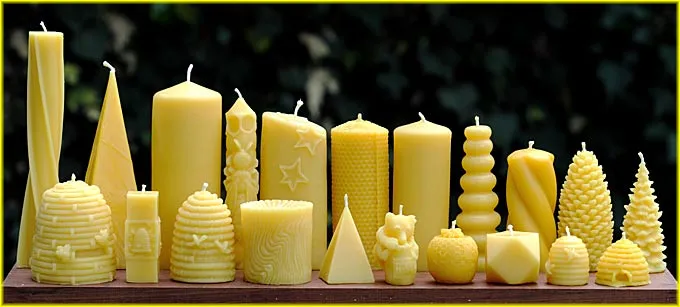
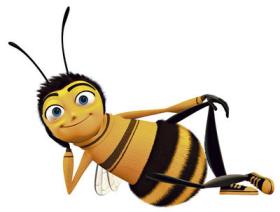

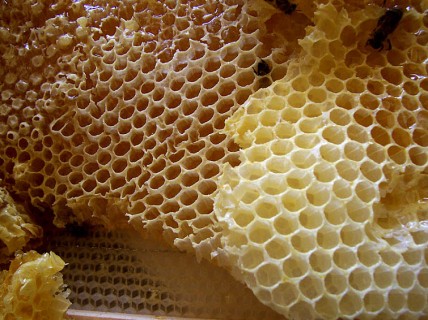
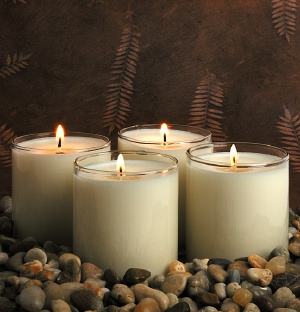
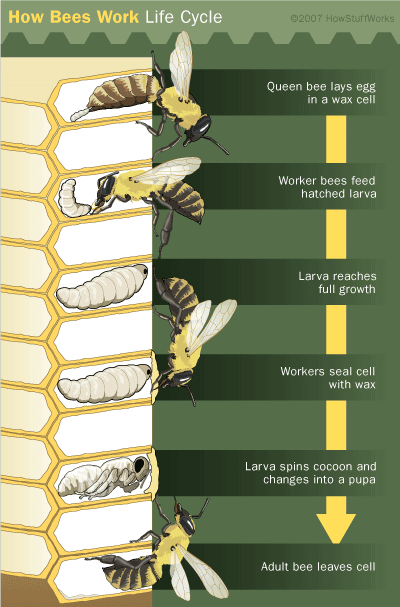

September 21, 2013 at 3:14 am
What a great post. I especially loved the stories from your youth, and the bee stuff. It brought to mind Roald Dahl’s story Royal Jelly, which is worth reading if you’ve never read it.
LikeLike
September 21, 2013 at 9:22 am
Hi my friend, thanks so much for reading such a long post and for your nice comment. I love Roald Dahl’s stories but I haven’t yet read “Royal Jelly” so I had best get that quick to read! Yes I am enthused about Bees now, and discovered there is a great book called “The Buzz about Bees” by a German fellow, translated to English, which I’m eager to read sometime. 🙂
LikeLike
January 22, 2016 at 5:41 pm
I am interested in beekeeping. So, I will read everything about beekeeping. Your post is very informative. Recently I got beautiful 100% beeswax candles and paraffin candles from Dadant.com.
LikeLike
January 27, 2016 at 7:25 pm
Thank you Alvin for your kind comments. Your candles sound beautiful. I bought a Candle Jewell recently from Australia – every candle has a ring in it as a surprise. i bought this one for my mother-in-law. 🙂 http://www.candlejewels.com.au/
LikeLike